
{This is guest post written by James "China Jim" Campbell. Jim has his own take on Doc Savage's history so this is an alternative world story with some factual information added. Enjoy!}
Of all the gizmos, doodads, gimmicks, and contrivances mentioned in the super sagas the technical aspects and history of the Super Machine Pistol (S M P ) has been bandied about. While the description given by Dent in his highly fictionalized transcriptions of the cases that Doc and his associates were involved in was cursory at best, I have taken it upon myself to go beyond the classic description of a over sized automatic pistol with a drum magazine that sounded like a roar of a bull fiddle when fired. With the help of that master of verbiage the erudite professor of archaeology and geology William John Harper whose name Dent changed to William Harper Littlejohn at the request of Doc and his men to protect to some extent their anonymity in public. (This will be explained in future articles.)
As a segue into this historical background of the Mark III Super Machine Pistol it is only right and necessary that I give a thumb-nail sketch of what prompted Doc to design and build the S M P which he and his men carried according to the sagas for a decade and a half. Unlike what Dent and P.J. Farmer had written Docs parents did not die separately but together in Brazil at the hands of a nefarious antiquities dealer and smuggler who hurled a jar containing burial chamber dust laden with a ancient bacilli which infected and killed his parents. ( Both of Docs parents were highly respected scientists and physicians) This happened in 1925 not 1931 as Dent had written. Doc was completing his medical training at Columbia University and at this university is were he met his five friends who would become his brain trust and brothers from 1931 to 1945. Doc swore to get justice not revenge for the death of his parents so from 1925 to 1931 he dedicated himself to developing mind, and body to near superhuman levels and to get the skills that he needed.
Since this article concerns the S M P Mark III we must first look at why he developed it. Doc understood that evil men with evil schemes used firearms so Doc realized he and his associates needed one too. Adhering to his Hippocratic oath about doing no harm and realizing if he took a life in the pursuit of justice he was no better than the the men he fought he sought to make a humane non-lethal weapon. Spending weeks considering and researching various ideas from the sublime to the ridiculous, Doc's choices came down to on two designs: the Mauser C-96 "Broomhandle" pistol and the Thompson sub machine gun. He decided to incorporate features from both of these weapons into his proposed new design.
Doc designed a cartridge that was capable of delivering an effective dose of an anesthetic drug without doing serious injury. He discovered that the blunt force trauma of most rounds at point blank range could still break bones or even stop the heart so he went for a small caliber projectile. After several tries using everything from .22 caliber to .45 acp Doc settled on the .32 caliber or 7.5mm cartridge using what would later be called wad cutters the .32 round would hit its target break one to three layers of skin and deliver the anesthetic.
Doc's next stop was the Walther weapons company in Germany. Doc presented his plans gave them one hundred thousand dollars US and five years to develop and perfect it in the utmost secrecy . During this five year period Doc with the help of one of his Associates developed a formula with a curare derivative which would render a person rapidly unconscious and paralyze their muscles but with no effect the autonomic nervous system (i.e. the heart and lungs would not stop functioning). Meanwhile he made several transatlantic flights to keep abreast of the SMP's development from prototype through the first two models. The Mark I had so much recoil that it was difficult to control on full automatic. The Mark II reduced the recoil but at the expense of accuracy and range. Doc rejected them both which led the Walther gunsmiths to nickname him "Goldilocks" since he considered the original models to be either too hard or too soft. The Mark III was just right.
Dent in his writings stated that the SMP used a rams horn (spiral) design much like what was used on the Luger tanker pistol but this was a complete farce. There was no way this could fit into a shoulder holster as described in the stories. The actual magazine was more like a banana clip than spiral drum. To say that a drum magazine was not used would be incorrect as well. Dent took the information concerning both and combined the two and so the ram horn design was created. In actuality the drum magazine was a miniature version of a Thompson drum containing 40 .32 cal. rounds The drum was developed by one of the Walther designers as a lark but Doc saw it liked it and said "Build it". By 1930 Walther had perfected the S M P to fire either semi-auto or full auto at the flip of a switch. In 1930 Doc took possession of six completed SMPs, each with five 10-rounds banana clips. He also got twelve 40 round drum magazines along with the plans, templates, tools, and spare parts for repairs.
What follows is the Mark IIIs technical information.
Mark III Super Machine Pistol Design :
Internal Blow Back ( the slide cycles internally i. e., Thompson SMG)
Barrel length: 115mm
Cartridge size: 7.5mm
Length of gun from butt to barrel: 167mm
Rate of fire on full automatic: 700 rounds/minute
Width: 43mm
Weight unloaded: 1.28kgs
Weight with 10 round magazine: 1.43kgs
Weight with 40 round magazine: 4.59 kgs
Muzzle velocity: 317 m/ sec. full round
Muzzle velocity mercy bullet: 158m/sec
Maximum range: 1,500 m full round
Maximum range mercy bullet: 750 m
Lethal effective range: 800m
Mercy bullet effective range: 400m
One handed accuracy: 75m
Held in two hands (Weaver grip or braced): 200m
# of grooves in bore: 6
Sight radius: 147m
During the development of the Mark III S M P the weapon was subjected to rigorous testing and it could function flawlessly in severe temperatures ranging from -50c to +70c and has proven reliable in wet and dusty conditions. Resistance to saltwater corrosion is due to a quality paint finish and proper interior oiling. The Mark III was highly resistant to mechanical damage. Test drops from 6m onto a concrete surface and 10m to a hard clay surface (including being dropped barrel first) found no mechanical damage. Being run over by an automobile produced no damage either.
The Mark III was also equipped with a muzzle flash suppressor and a internal compensator to negate a barrel climb when fired on full auto. This attachment could be unscrewed and replaced by a sound suppressor (silencer) chambered for the 7.5mm round which reduced the bullet crack to near zero. This suppressor was mentioned in one (to the best of my knowledge) super-saga. While Dent always mentioned the weapon being fired on full auto the Mark III could fire on semi automatic as fast as you could pull the trigger. Most pistols only held 5-7 rounds at that time. The 10 round magazine and 40 round drum made the Mark III a formidable weapon to face off against even at the semi-auto setting. On full auto, the rate of fire was 700 rounds/minute. This was faster than the basic Thompson SMG (600 rounds/minute) but slower than the Mauser C-96 on full auto (1000 rounds/minute).
So in conclusion the SMP like Doc took time to develop but it came to near perfection and the weapon served him and his associates well. What follows are photos of the Mark III with and without it s silencer, the shoulder holster and the drum magazine.








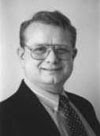

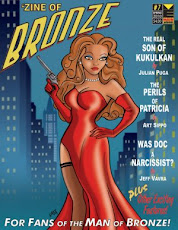
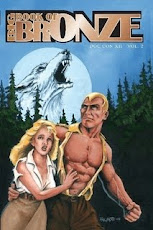



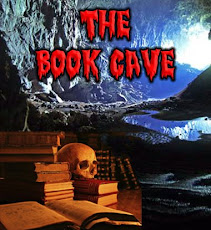


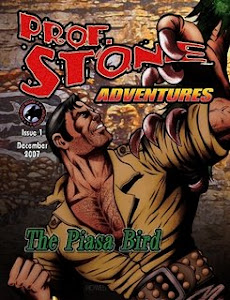


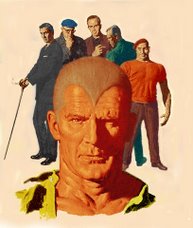

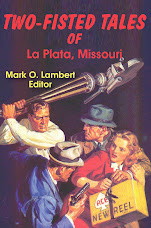



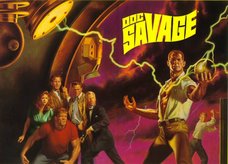





1 comment:
Thanks Art I could not have published this with out your help.Give me some feed back Brothers
Post a Comment